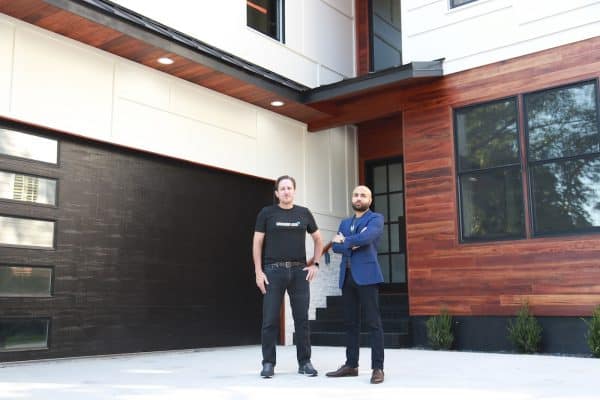Last week, LendingClub (NYSE:LC) filed an 8-K with the Securities and Exchange Commission (SEC) indicating its intent to stop offering retail notes by the end of the year. The leading marketplace lender in the US started as a peer to peer lender but over the years it has raised most of its capital via institutional money. The pending acquisition of Radius Bank, a federally chartered bank, has compelled LendingClub to revisit its offerings and it appears that retail investors simply do not make the cut anymore – at least in how LendingClub currently allows retail investor participation.
While retail investors may be disappointed in LendingClub’s change in direction there are alternatives in the market – real estate being an option.
Crowdfund Insider connected with Brian Dally, co-founder and CEO of GROUNDFLOOR, a real estate investment platform that allows retail money to participate in its offerings for his perspective. Our discussion is shared below.
Were you surprised about LendingClub’s announcement to exit retail notes?
Brian Dally: No, not at all.
The writing has been on the wall ever since LendingClub chose the path of institutional capital. It’s an unfortunate reality that once that die has been cast, institutional capital always crowds out retail investors from a private capital market. This typically takes time, and people don’t want to admit while it’s happening, but we’ve seen this play out with many platforms in many markets over time.
LendingClub is not exiting online lending. Do you expect them to offer a different type of retail product?
Brian Dally: Yes, like Marcus and every other bank, it would not surprise me at all if LendingClub hastens to offer yet another low-yield deposit product that strips depositors (formerly: investors) of their agency and rightful share of the yield that they’ll now be taking for themselves.
What are your thoughts on LendingClub’s purchase of a digital bank and the services it can provide?
Brian Dally: For the path LendingClub has chosen, it’s a necessary and smart move.
Like every other consumer financial institution, they’ll need to broaden their offering and build the brand to become large enough to acquire or be acquired. This growth will probably be helpful for the stock, which has declined over 95% since its IPO six years ago.
As a platform operating in the real estate investment sector, what kind of returns is your platform seeing today?
 Brian Dally: LendingClub investors love GROUNDFLOOR once they discover it. Like LendingClub, and different from other real estate platforms, our securities are publicly regulated to allow direct allocation of capital to the underlying loans (not via a fund) by non-accredited and accredited investors alike. But compared to LendingClub, the historical returns generated by our product are higher (typically 8-12%), the terms are shorter (typically 6-12 months), and the risk profile is lower (all loans secured by a lien on residential real estate).
Brian Dally: LendingClub investors love GROUNDFLOOR once they discover it. Like LendingClub, and different from other real estate platforms, our securities are publicly regulated to allow direct allocation of capital to the underlying loans (not via a fund) by non-accredited and accredited investors alike. But compared to LendingClub, the historical returns generated by our product are higher (typically 8-12%), the terms are shorter (typically 6-12 months), and the risk profile is lower (all loans secured by a lien on residential real estate).
On average, our investors have earned annualized returns of 10.74%, net of a loss ratio of just 0.72%. This hasn’t changed in 2020, despite the economy. But don’t take my word for it; those interested should check out our blog to review detailed performance analyses of our overall portfolio, investors’ portfolios, and a COVID-19 inspired stress test.
What about defaults? The ability to diversify to mitigate risk?
Brian Dally: Defaults in real estate-backed loans aren’t the same thing as defaults in unsecured consumer credit. We should clarify what is meant by the term.
In consumer credit, it typically means the borrower is (very) late in making a payment. At some point, the creditor writes off the debt and typically takes a loss on principal.
In real estate lending, in addition to taking payments along the way, we also monitor to confirm the borrower has done what she said she’d do with the collateral underlying the loan. If we find she has deviated from the renovation plan, from allowable uses, or from some other term of our loan agreement, we declare default.
Default is a tool in our asset management arsenal. The threat of foreclosure is usually a very effective motivator. As our head of risk management says,
“I know real estate entrepreneurs sometimes have lots of problems. We just want to be the most important one.”
It should also be said that our goal at GROUNDFLOOR is to generate the highest net return, not to avoid all defaults. If you have all your eggs in one basket, or are over-concentrated in a handful of loans, you have to be very concerned about one default completely eliminating your overall return. Our $10 minimum investment is engineered to ensure that everyone can diversify away that element of risk. Even if you only have $1,000 to invest, that’s enough to hold a 100-loan portfolio, which is more than the vast majority of local hard money lending shops!
Some of our defaults actually end up yielding more than the contract rate, while others go through foreclosure and realize a loss. On balance, investors who are properly diversified end up earning superior returns, with greater predictability than any one debt investment or small basket of them could be expected to deliver.
How has COVID impacted GROUNDFLOOR? What about investor demand?
Brian Dally: Despite the onset of COVID-19 and limitations on lending operations that all platforms faced due to decreased economic activity, GROUNDFLOOR’s investment platform actually continued to grow, indicating investor confidence in our products as a viable alternative to public investment options. Recent growth metrics include:
A quarterly record in Q2 of $33.3 million in LRO and GROUNDFLOOR Notes investments. This was a 24 percent increase compared to Q1 2020 and a 48 percent increase compared to the same period in 2019.
Another quarterly record in Q3 of $44.5 million in LRO and GROUNDFLOOR Notes investments. This was a 33 percent increase compared to Q2’s record and a 39 percent increase compared to the same period in 2019.
Repayment of $12.2 million for loans on 88 properties in Q2, representing a slight increase over Q1 repayment unit and dollar volume despite the impact of COVID-19. We are proud of this since popular eREITS paused redemptions during the pandemic, which meant investors couldn’t withdraw any money when they might have most needed or wanted to.
Raising $2.4M in equity capital through SeedInvest, bringing our public ownership to over 23 percent and more than 4,000 individual shareholders.
Has the product mix changed under COVID? Is it less urban – more suburban/rural? What about sponsors/developers?
Brian Dally: Our portfolio has always been composed of less urban, lower-cost markets, and more concentrated instead on suburbs, exurbs, and second/third tier metro areas. That’s still true. We’ve never been active in California or New York, for example.
In the early phases of the pandemic, we limited our lending only to our most experienced borrowers and geographically to the southeastern US. We’ve gradually expanded that back toward pre-COVID lending criteria, while also developing new products to provide our most experienced borrowers a competitive advantage in competing for deals.
What are your expectations for 2021?
Brian Dally: Next year looks like it’s going to be a real inflection point. We’re already putting our current round of growth capital to work to prepare for that.
People have woken up to Wealthtech with apps that are re-intermediating public markets, such as Robinhood and Stash. With mass adoption of those new public intermediaries well underway, investors are increasingly starting to discover private market offerings like ours. Private markets have always offered more alpha than public markets. There’s a growing class of public securities that allow everyone, not just institutions and accredited investors, to get their piece of that, but without giving up control to some fund manager who charges you exorbitant fees for the privilege. Remember when you couldn’t buy individual public stocks, but had to buy mutual funds to get exposure to them? Neither do I. Private markets are catching up.
There is already and will increasingly be a flood of capital seeking high yields with low volatility, not just next year but probably for the next five years as markets begin to feel the negative effects of a decade of quantitative easing and other macroeconomic interventions since 2008. Meanwhile, we’re expecting a choppy, uneven economy next year that will continue to vary significantly by wage class and region. That spells a big opportunity for the best real estate entrepreneurs, and we will be ready to arm them for it.


